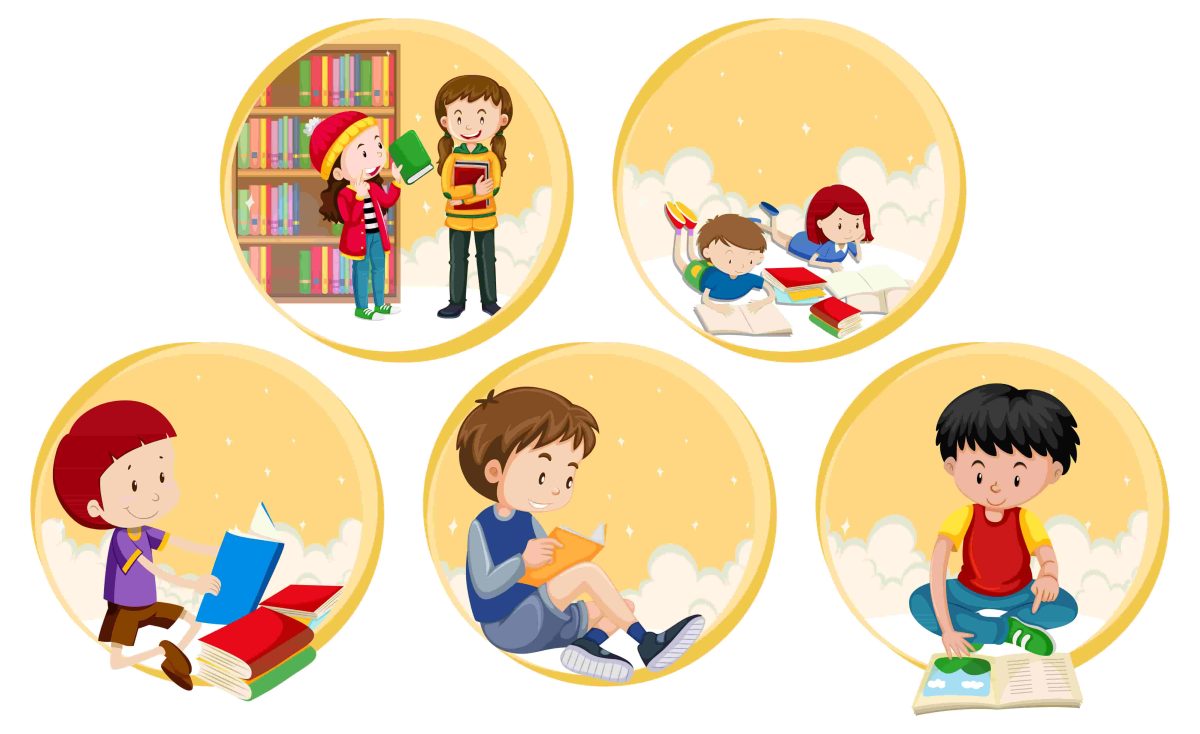
Writing
⭐ Let’s bring your children’s book to life one page at a time! ⭐
Writing a children’s book isn’t just about storytelling—it’s about creating a world where young minds can dream, learn, and grow. It’s an exciting, creative process that lets you spark curiosity and imagination. Whether you’re brand new to writing or a seasoned pro jumping into the world of children’s books, here’s everything you need to know to get started and see your book come to life.
1. Get to Know Your Audience

Children’s books are far from one-size-fits-all. You’ve got to think about what age group you’re writing for because their interests and attention spans change a lot as they grow. Here’s a quick rundown:
- Board Books (0-3 years): Super simple concepts, lots of bright, bold pictures, and sturdy pages so they can be handled by little hands.
- Picture Books (2-5 years): Short stories with big pictures—ideal for bedtime or storytime.
- Early Readers (6-8 years): Short, easy chapters, with some illustrations sprinkled in to keep things fun and accessible.
- Middle Grade (8-12 years): Kids who can handle more complex plots, stronger characters, and themes they can relate to.
- Young Adult (12-18 years): Stories that tackle real-world problems with teen characters.
Knowing your audience isn’t just a nice-to-have—it helps you craft a story that’s going to hit home.
2. Find Your Big Idea

A strong, unique idea is the heart of any book. You don’t need to reinvent the wheel, but your story should have something fresh about it. Here’s how to brainstorm:
- Draw from Your Own Childhood: Kids love to hear about funny or relatable things that happen to real people. Maybe you had an adventure, or learned an important lesson—why not turn that into a story?
- Explore Big Themes: Think about the big emotions or challenges kids face, like friendship, being brave, or learning to share.
- Educate with a Twist: You can sneak in learning without it feeling like homework. Whether it’s about animals, space, or feelings, there’s a way to make it fun and informative at the same time.
Whatever your idea, just make sure it’s something that will connect with the age group you’re writing for.
3. Create Characters Kids Will Love

Characters are what make kids want to read again and again. To really pull them in, your characters need to feel real, and they need to be people (or animals, or robots, or whatever) kids can relate to.
- Give Them Something They Want: What do your characters care about? What do they struggle with? This is what drives the story.
- Diversity Matters: Reflecting different cultures, backgrounds, and perspectives is a great way to make your book more inclusive and engaging.
- Keep Them Consistent: Don’t have your character suddenly acting totally different from how they were introduced. Kids notice that!
Relatable characters help readers connect on a deeper level.

Bring your children’s book idea to life with expert guidance! Start Your Book Today 🚀
4. Keep It Simple, But Structured

Kids’ books don’t need a complicated plot. In fact, a clear, simple structure is often best for younger readers. Think of it like a recipe:
- Start With an Introduction: Set the stage, and introduce your characters.
- Add Some Conflict: Every good story needs a problem that your character needs to solve.
- Bring in the Climax: This is the most exciting part when everything is on the line!
- Finish with a Resolution: Tie up the loose ends and leave readers feeling satisfied.
It doesn’t have to be fancy. It just needs to flow, and make sense.
5. Illustrations Are Key

For many children’s books, the pictures are just as important as the words. If you’re not an illustrator yourself, you’ll need to team up with one to bring your story to life.
- Find the Right Illustrator: Look for someone whose style fits your story. Their art should enhance, not overpower, the text.
- Think About Layout: Talk with your illustrator about how the pictures and words will fit together. The visuals should help tell the story.
Good illustrations can say a lot without using words at all, so pick an illustrator who really gets your vision.
6. Write Like You’re Talking to a Kid (Without Overdoing It)

When writing for kids, you don’t want to sound too formal or stiff. The goal is to make the text feel like you’re telling a story to a friend. Avoid big words or complicated sentences. Here’s how:
- Use Simple Language: No need for fancy words or jargon. Keep it clear and easy to understand.
- Add a Little Fun: Kids love repetition, rhythm, and even a bit of rhyme. It makes the book feel like it’s got its own little beat.
- Engage Their Senses: Think about how the story feels. What can they see, hear, or even smell? Kids love to imagine the world through their senses.
Be clear, but don’t forget to have fun with it!
7. Time to Edit—Then Edit Again

Once your first draft is ready, step away from it for a bit. Come back with fresh eyes, and start looking for places where things can be tighter, clearer, or just more fun. Ask for feedback—parents, teachers, or even kids themselves can give you insight into how the story is working.
Don’t be afraid to rewrite sections or cut out anything that feels unnecessary. Editing can be a bit of a grind, but it’s the part that makes the story truly shine.
8. Publish It—The Big Decision

Now comes the big choice: how do you want to get your book out there?
- Traditional Publishing: This involves finding a publisher or an agent, which can take time and patience. But it also means you’ll have a whole team behind you to help with editing, marketing, and distribution.
- Self-Publishing: If you want more control, platforms like Amazon KDP allow you to publish your book yourself. You’ll have to do more of the work yourself, but you also keep more of the profits.
Both options have their perks—research and think about which path feels right for you.

Self-publishing or traditional? We’ll help you choose the right path! Get Publishin Help🚀
9. Get Your Book Into the World

Writing and publishing your book is a huge step, but the journey isn’t over. You’ve got to let people know it exists!
- Build Your Online Presence: Create a website and start sharing your book on social media. Let people know why it’s special!
- Ask for Reviews: Reviews on Amazon and Goodreads help your book get noticed.
- Get Involved in Book Events: School readings, local book fairs, and library events are a great way to meet readers and get the word out.
Marketing is key to helping your book reach its audience. Be persistent and have fun with it!
10. Keep Evolving

The world of children’s books is always changing. Keep reading, keep learning, and keep connecting with other writers and illustrators. By staying inspired and open-minded, you’ll be able to keep growing as an author.
Conclusion
Writing a children’s book takes time, creativity, and a bit of persistence. But when you get it right, it’s incredibly rewarding. Just remember: keep it simple, relatable, and fun. Stay true to your voice, and don’t be afraid to put yourself out there. With these steps, you’ll be well on your way to writing a book that kids will love!
Excited to bring your children’s book idea to life? If you’re feeling inspired, it’s time to dive in! Whether you’re just starting your first draft or you need help finding the right illustrator, we’ve got your back. Looking for a little extra support? At Ghostwriting Founder, we specialize in helping authors like you create children’s books that truly connect with young readers. Reach out today, and let’s turn your vision into a book they’ll love!
FAQs
How long should a children’s book be?
It really depends on the age group. Board books are short, usually under 300 words. Picture books are a bit longer, around 500 to 1,000 words. Early readers can go up to 5,000 words, and middle-grade books might be as long as 50,000 words.
Do I need an illustrator, or can I submit my book with just text?
If you’re going the traditional route, publishers usually prefer just the text. They’ll handle finding the right illustrator for your story. But if you’re self-publishing, you’ll need an illustrator or to create the art yourself.
How do I copyright my children’s book?
You can copyright your book by registering it with the U.S. Copyright Office (or your country’s copyright agency). In the U.S., visit www.copyright.gov to protect your work.
What’s the best way to publish my children’s book traditional or self-publishing?
Traditional publishing gives you support, but it can take a while. Self-publishing means full control and better royalties, but you’ll need to manage everything from editing to marketing. It depends on what you’re looking for.
How can I market my children’s book and reach more readers?
Social media is key share sneak peeks, run giveaways, and connect with readers. Book fairs and school or library readings can help too. Getting reviews on Amazon, Goodreads, and BookBub is also a great way to get noticed. A website and targeted ads can boost your reach even more.

Ready to become bestseller? From Writing to Marketing, We Handle It All! Get Started Today! 🚀









Leave a Reply